This site is provided for instructional and educational purposes and for all who enjoy the splendor of nature. The images herein are, for the most part, taken from taxa found in an area bounded on the west by a north-south line running from Osoyoos, British Columbia south along the west border of Douglas county to The Dalles, Oregon. The east boundary would include that portion of Idaho adjacent to Washington. In almost all cases the taxonomy that is followed here is consistent with that posted and discussed at WTU – The Burke Museum/University of Washington Herbarium. The synonymy lists are taken from a variety of sources but largely are those of WTU. Please contact the author with comments or corrections to the site (RCARR@EWU.EDU).
These pages are linked in a variety of ways to a site entitled: Flora of the Turnbull National Wildlife Refuge and a previously developed website entitled: OREGON FLORA IMAGE PROJECT. Information and images on the Oregon site are presented by Dr. Gerald D. Carr, faculty emeritus, The University of Hawaii.
These web-sites are freely provided for your enjoyment or for instructional and educational purposes. Any duplication or publication of text or images herein for commercial gain without explicit written permission of the owner or photographer constitutes a breach of trust and violation of copyright.
©Robert L. Carr —— ©Gerald D. Carr
The collection of images at this site is dedicated to those most responsible for opening my eyes to the glory of nature, Lydia and Emery Carr. Many wondrous times were spent with my family wandering through sagebrush-covered hills in search of the first “yellow bell”(Fritillaria) or the rare “cat ears” (Calochortus) or just to view the splendor of phlox covered sage and brilliant mounds of balsamroot.
MONOCOT Taxa
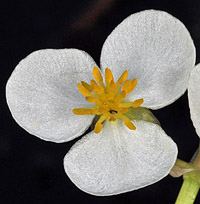
Sagittaria cuneata 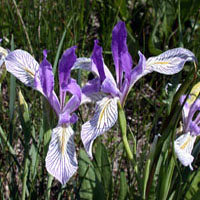
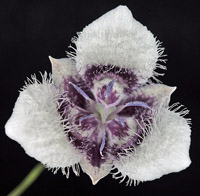
Calochortus elegans 
Cyperus strigosus 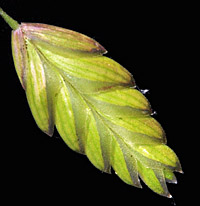
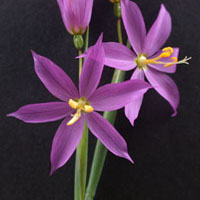
Ours mostly herbaceous; Stems with vascular bundles scattered throughout (not arranged in a single cylinder). Leaves generally with parallel main veins, often linear to lanceolate and generally entire; flowers with parts in 3’s (or multiples of 3’s). Grasses and sedges have highly reduced flowers that don’t fit the “3 part” flower character.
DICOTS Taxa
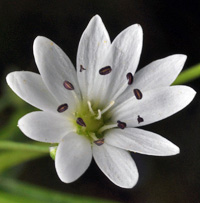
Stellaria/Cerastium 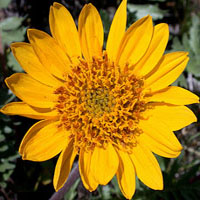
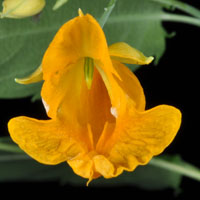
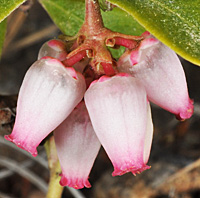
Archtostaphylos uva-ursi 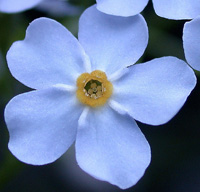
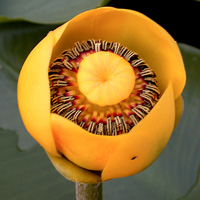
Woody or herbaceous; stems with vascular bundles arranged in a cylinder around a central pith or, in woody species, in cylindrical layers; leaves generally with reticulate (netted) venation, many different shapes; flowers with parts numerous or in 4’s or 5’s or multiples thereof.
NON FLOWERING Taxa
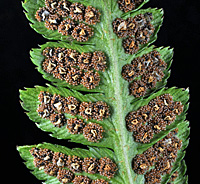
Fern 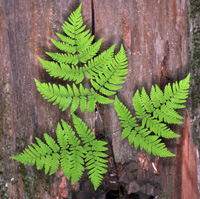
Gymnocarpium disjunctum 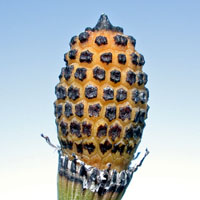
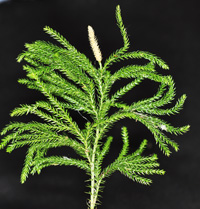
Lycopodium dendroideum 
Botrychium virginianum 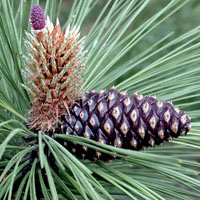
Non flowering vascular plants; can be divided into those that reproduce by seeds (“Gymn\osperms” ex. pines, firs, etc.) and those that reproduce by spores only (ferns and “fern allies”).

